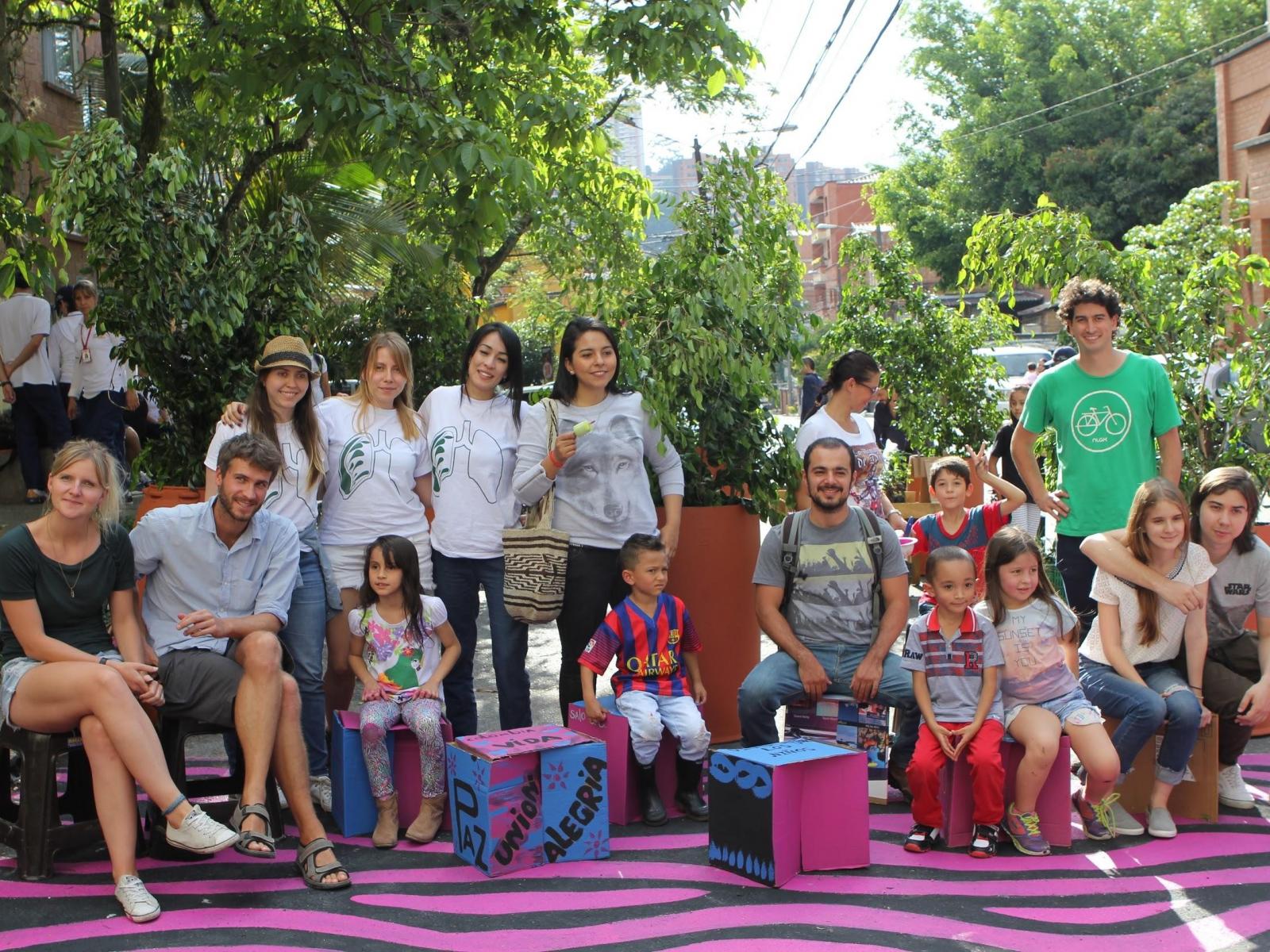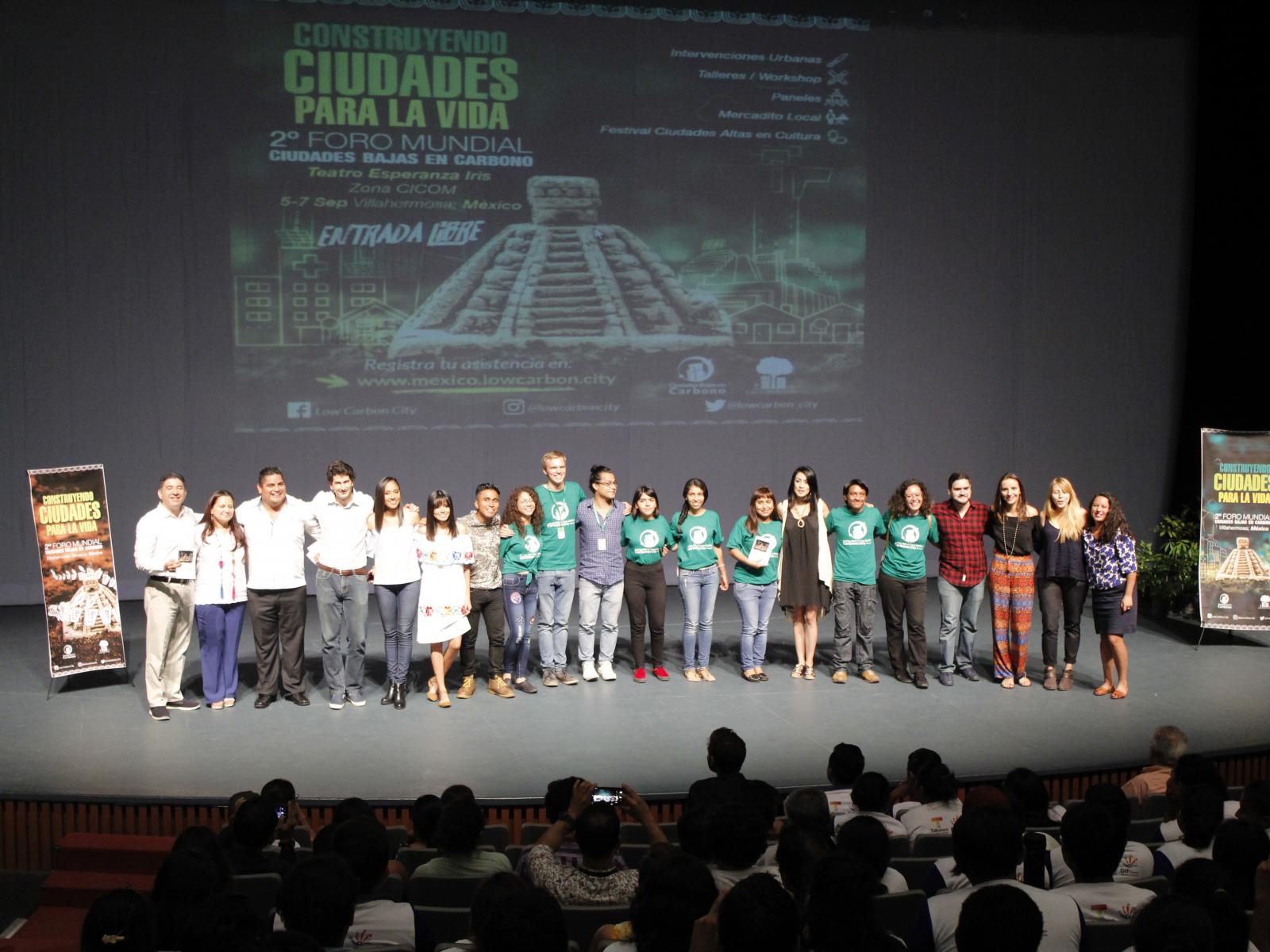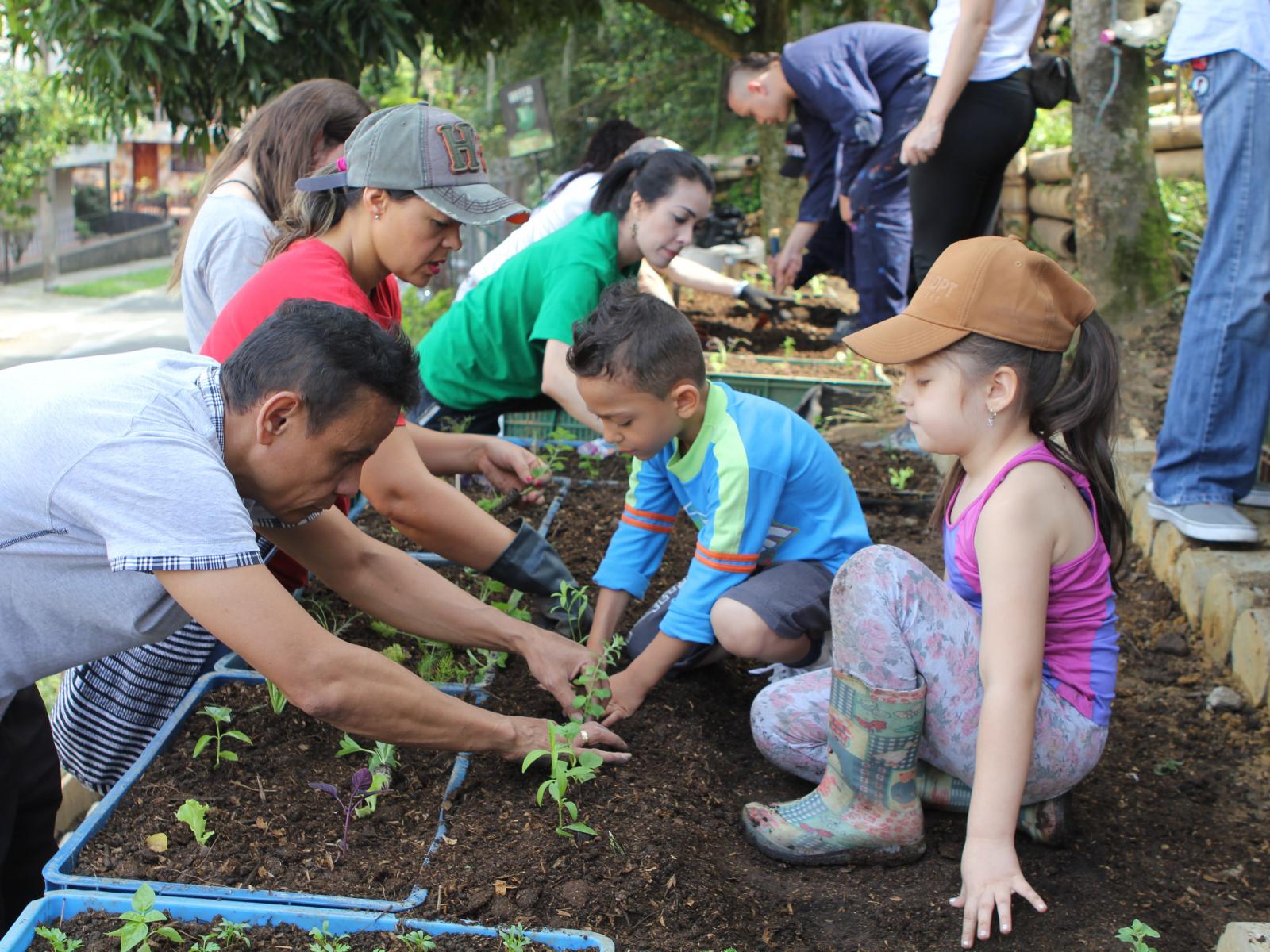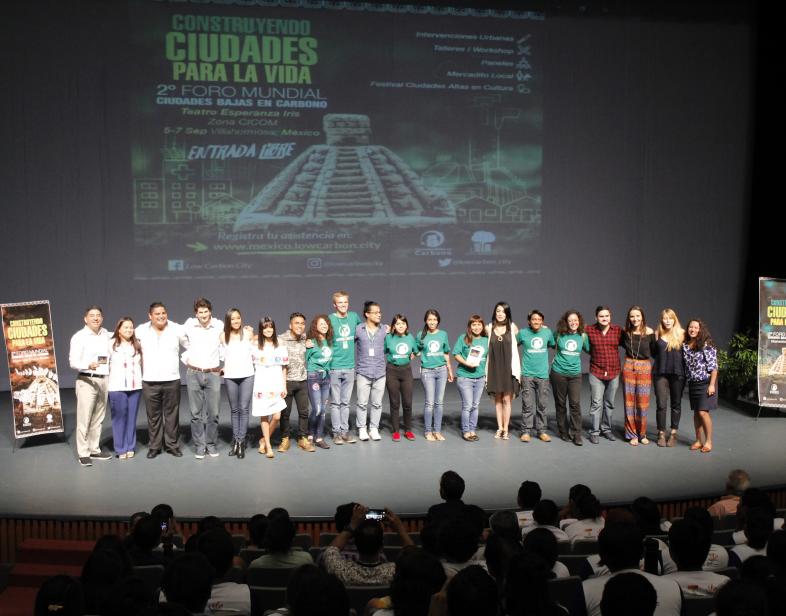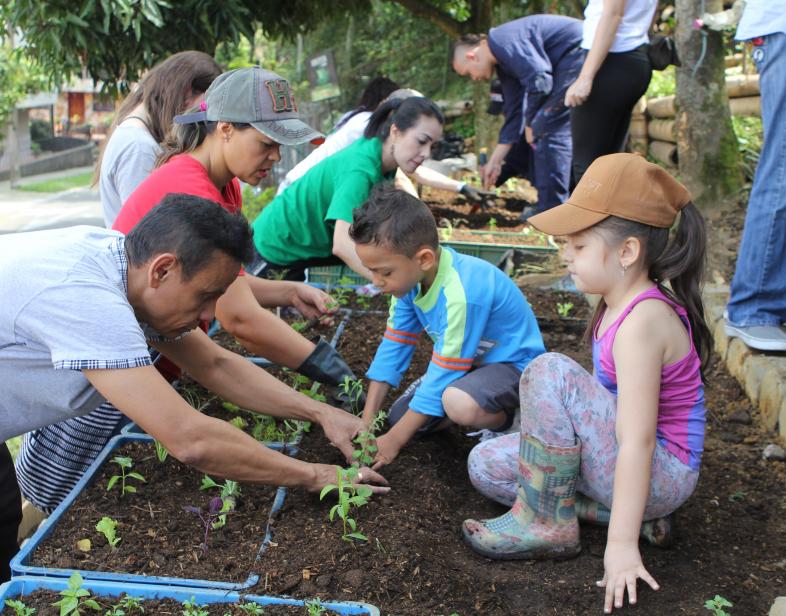An Overview Of Our Solution
Citizens are not considered as part of the solution to tackle climate change in their cities. But if they were aware of their contribution to the problem, educated about climate change, and connected with likeminded people it would be possible to have more resilient and liveable cities, responding to climate change challenges.
Low Carbon City is a citizen-led global movement building collective solutions to tackle climate change in cities. We educate citizens using creative, participatory, and artistic tools to enhance climate friendly lifestyles. We connect citizens with experts and change-maker to exchange knowledge and collaborate. And we co-create and implement solutions within communities for building low carbon and more resilient cities.
- Population Impacted: 33,000 people
- Continent: South America
Last name
Organization type
Context Analysis
Citizens are not included in climate change governance, but they can hold great contributions to address solutions, since cities produce 70% of GHG emissions and citizens live within. Climate change had a lot of scientific evidence that is too academic to make it easy for a regular citizen to understand. The gap between the information and the understanding of the real problem is huge. To bridge that gap is important to shift behaviors and consider individuals as part of the solution.
A collective construction of a climate change governance is needed, a multi-stakeholder one, where educated citizens are included, not only developing solutions in their local context but also connected to each other to scale up those solutions and building together low carbon and resilient cities, responding to the challenges of climate change.
Describe the technical solution you wanted the target audience to adopt
Low Carbon City has created during the last three years an international network of cities, already made up of more than 100 cities all around the world. This network aims at connecting actors from different backgrounds and making easier the exchange of knowledge and good practices. Besides, our second « World Low Carbon City forums » in Villahermosa, Mexico, in 2017, which has mobilized 4.000 people from 48 countries contributes to sharing solutions at a global scale. Next edition will be held in september 2018 in Paris, France.
Type of intervention
Describe your behavioral intervention
What Low Carbon City does is trying to make citizens aware of their ability to create efficient solutions from their cities to tackle climate change and make them think about their behaviour in their daily lives so as to make it more sustainable. In order to achieve this goal, Low Carbon City creates call to actions activities to inform about key environmental issues such as air quality in cities, waste production or use of water. We believe that it is necessary to explain what is at stake in a simple way, to make it understandable for everyone and allow the citizens acquire better comprehension of these topics that affect their daily lives.
As needed, please explain the type of intervention in more detail
To make citizens more aware of how to tackle climate change, Low Carbon City offers free workshop and courses to educate citizens and tries to connect very diferent actors, such as citizens, experts, governments, etc. We also lead projects such as the creation of an ecodistrict in Envigado, Colombia, an urban area that seeks to reduce CO2 emissions by low-cost interventions, building colectively actions among citizens in 5 components : mobility, habitat, urban agriculture and forestry, renewable energy, and waste management.
Describe your implementation
During its three years of existence, Low Carbon City has been implicated in a lot of projects that benefited the whole society by building bridges between many actors from different backgrounds (actors from both public and private sector, local governments, non-for-profit organizations, local comunities, etc.). Cocreating projects is both an efficient strategy to improve the quality of these projects but also a goal in itself : it is in fact essential to implicate everyone to build collective solutions adapted to their real needs. To overcome the difficulty of making this different people working together, who do not always share the same goals and priorities, the first step of every project we lead is always dedicated to discusions with all the local actors without exception. We also take particular care about giving the floor to all of them on an equal footing. We also work a lot on making citizens more confident about themselves and their abilities by valuing their contributions to the common work.
Though our projects, listening people, what they think on climate change, what they perceive as the problem, how they see the solutions and how they want to create their contributions have been one of the main learning. There is a big gap between science of climate change and regular people, but there are amazing knowledge in every community to tackle climate change and engage people if we are able to close that gap. We also created a big network of institutions worldwide working for the mitigation of climate change. All that knowledge together allow that all society benefits from that. Lastly, we have a multi-stakeholder platform that help us to have different perspectives of the problem, therefore different approaches when it comes to solutions. It enrich every activity and challenge your own perspective.
External connections
As a global movement led by citizens, Low Carbon City contributes to make their voice heard and to make it interact with local government or private actors, adopting a multi-actor approach. We have very good relations with local political actors and private companies, that we advise on how making their development models more sustainable. During its three years of existence, Low Carbon City has also built some very strong links with local comunities, especially in the most popular neighbourhoods, where we have led many projects during the last years.
Who adopted the desired behaviors and to what degree?
Thanks to some of our media actions, we managed to achieve positive results in very important issues. As an example, in April, 2016, we oficially launched our « #breath life creative intervention ». This action consisted in carrying out an urban intervention in Plaza Botero – one of the most emblematic touristic sites of Medellin – to start a discussion in the streets about the air conditions that two and a half million people breathe every day. The sculptures by artist Fernando Botero were covered with masks to protect them from the dangerous levels of contamination in the city centre in Medellin. Following this action, the local government accepted to meet us to exchange views on this topic and finally adopted an official plan to improve air quality in the city.
How did you impact natural resource use and greenhouse gas emissions?
In terms of green economy, we had lead the The 1st Latin American Climate Change Award aimed to map social entrepreneurs and start ups led by citizens that already contribute to the transition to a sustainable economy, to scale up their innovations. For 2018 we are planning to make this award global. In terms of resources, we created for example training courses on urban metabolism where citizens and leaders of communities not only learn about waste management but also create and implement solutions for their communities to find new uses to garbage, and also promote circular economy. Lastly, in terms of natural ecosystems and biodiversity in Latin American context, we educate a lot our citizens on the importance of urban biodiversity, because our countries are rich on this resources.
What were some of the resulting co-benefits?
Regarding to sustainable cities and built habitats we are building low carbon neighborhoods and Eco-Zones with community based solutions. Besides community engagement we reduce emissions from their neighborhoods. We take particular care about building solutions along with the comunities adopting a participative and inclusive approach. We also work a lot in the most popular neighbourhoods to improve quality life for those who needs it the most.
Sustainability
Although our project is non for profit, we can ensure the financial sustainability because of our partnerships, contributions of our volunteers, optimization of costs, creative use of resources, and also selling services to local governments.
Return on investment
During its three years of existence, Low Carbon City has invested around 150.000 U.S. $ in its actions to tackle climate change. All of our activities are free access so that we ensure a high level knowledge, education, interaction and engagement to all kind of citizens. For example, the First Forum was done in downtown Medellin, a place which has problems of security, environment and inequity. Not only we wanted to promote solutions for climate change but also to promote development and social cohesion. There were alternatives for citizens and community integration and learning, like organic food market, fair trade products, startups promoting electric mobility, sustainable products, urban agriculture, recycling furniture, so on.
How could we successfully replicate this solution elsewhere?
The network of Low Carbon City has the aim to maintain the initiative in the long term and promote the interaction and communication between the different urban actors which intervene in the construction of low carbon cities. The network also looks to maintain an open and sustainable dialogue. Furthermore, in 2017 the Forum was in our ambassador City Villahermosa in Mexico, and next year is oil to be in our ambassador city Paris, because Citizens from there have an interesting public and private partnership to keep promoting our international platform and raising awareness. For 2019 and 2020 we have received already application from Costa Rica, Chile, Ecuador and Austria to host the Forum. At the citizen level, we have a guideline for our interventions to allow people to scale up interventions and activities on their own.
